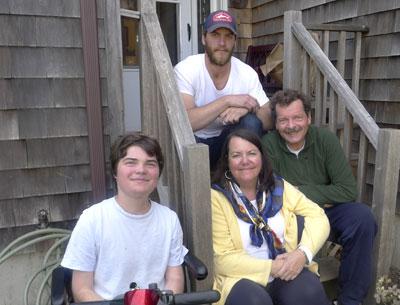Parishioners Stage a Passion Play
Parishioners Stage a Passion Play

He is a carpenter and he has long hair, traits he shares with the person he portrayed on Good Friday at St. Therese of Lisieux Catholic Church in Montauk. But unlike Jesus, who was born in Bethlehem, Adrian Sanchez was born in Cuenca, Ecuador.
This is the church’s third Spanish language passion play, which re-enacts the Last Supper, the arrest of the man who became Jesus Christ, his trial, and crucifixion. It is also the third year Mr. Sanchez has portrayed him.
It was not a part he sought three years ago when the parish first took on the production. “Three years ago, we said, ‘We have to do something different,’ ” he said yesterday about the original concept. “Maybe I can help coordinate it,” was what he recalled saying. But when it came time to cast the role of Jesus, “They all pointed to me.”
“I get patted on the back, but they did it,” said the Rev. Michael Rieder, referring to the Spanish-speaking members of the parish. “Three years ago, they came to me and asked, could they do it? I said, yes, of course.” This year, two English-speaking parishioners volunteered to take part, John and Vivian Wilkinson. Mr. Sanchez said they handled their roles with aplomb.
One thing his devotion to the Catholic Church could not prepare Mr. Sanchez for, he said, was the feeling he got when he was attached to the cross for the first time, and it was raised. “You feel like you’re falling forward,” he said, “but, you get used to it.”
It was chilly and windy on Good Friday. “I was afraid he was going to die of frostbite, not crucifixion,” the pastor, who is known as Father Mike, said.
Some of those watching the play, which started on the lawn of the parish school across Essex Street before moving to the steps in front of the church, spoke no Spanish.
“It tells you that no matter what language you speak, you can understand,” the pastor said. Ultimately, one goal of the production is simple, he said: “To join the Spanish community with the American community. We want people to collaborate. There is always room for more people.”
“This is becoming a new part of our parish tradition,” he said. “We are not two parishes, we are one.”



